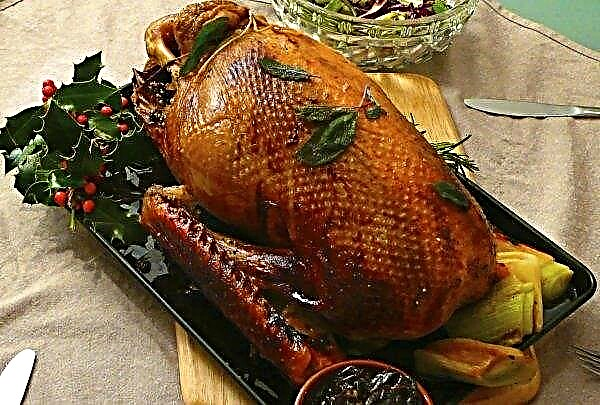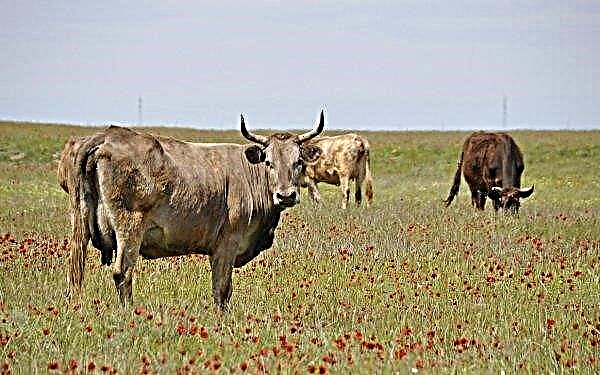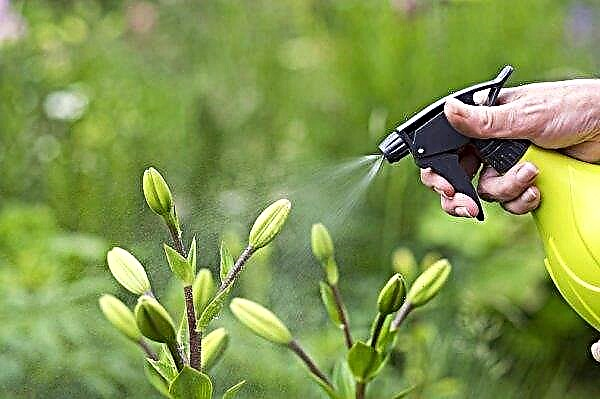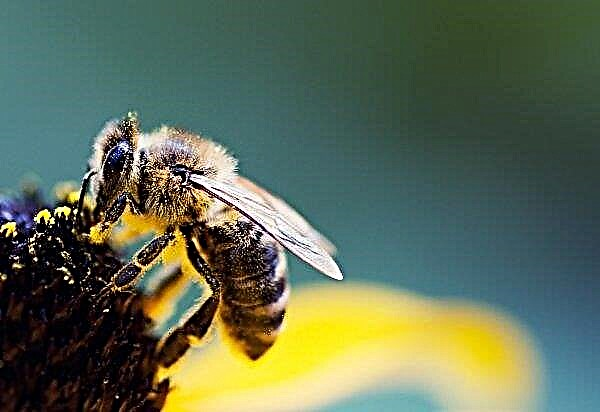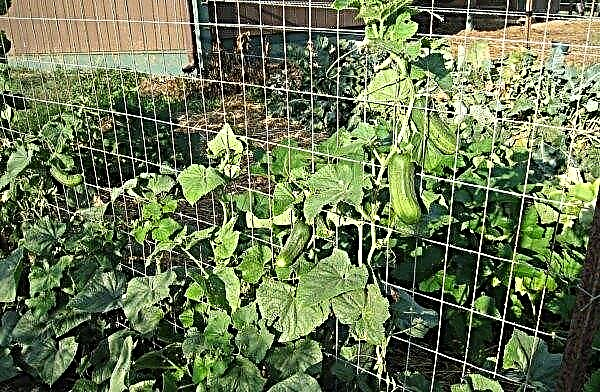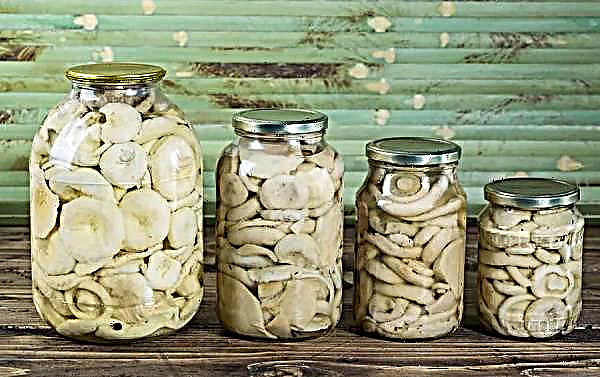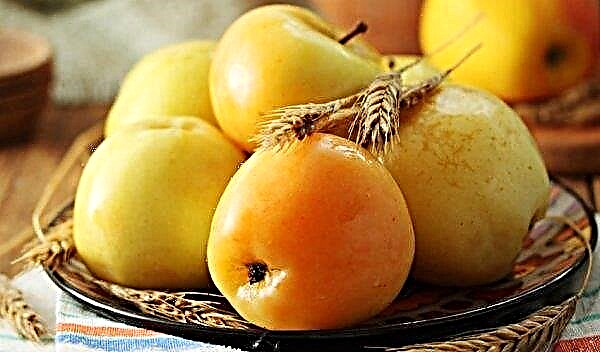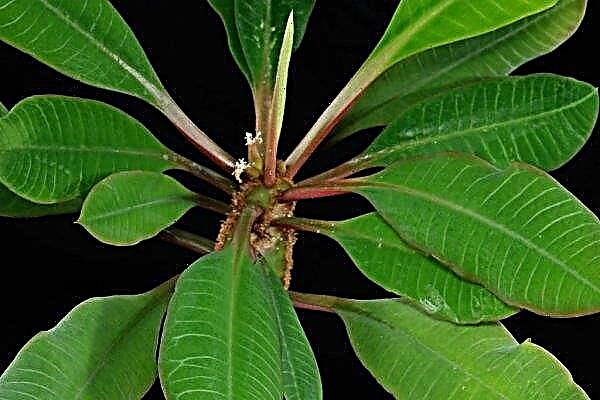Rabbits are kept as pets for meat, wool or as decorative pets. There are a huge number of breeds of rabbits, grouped in directions. But there are some among them that can be immediately attributed to several areas. These include Angora decorative rabbits, which are kept as pets and at the same time receive magnificent wool from them.
Origin history
It is believed that Angora rabbits come from Turkish lands, but there is no documentary evidence of their origin. In the 23rd year of the XVIII century, the French merchants, who trade with the Turks, acquired from them a cute fluffy animal.
So the breed came to Europe, where in three decades it quickly spread throughout the territory. At first, the eared were respected only by the nobility and kept for fun. By the end of the XIX century, animals began to be bred for wool.
In 1900, the Angora rabbit came to the United States, and local breeders actively began to improve the breed. In 1944, from a single breed that existed before that time, two were formed: French and English.
In 1988, they obtained another species in America by crossing an Angora rabbit, imported from Germany with a heavy commercial rabbit, - German. Later, the French and Germans described other subspecies: giant, satin, dwarf.
Did you know? The name of the Angora rabbit breed comes from the eponymous name of the Turkish city of Angora (modern Ankara). Here they have been bred since ancient times.
Description of appearance
Angora rabbits belong to the downy direction of these eared animals. Like all other representatives of the group, they have a shortened body, a disproportionately large head and small tassels on the ears. Their hair is 90–92% of high quality fluff and low allergenicity. With one individual, you can collect up to 500 grams of beautiful fluff.
In more detail, we describe the features of the breed in the table.| Appearance | Description |
| Color | clean, uniform (white, blue, gray, black) |
| Torso | cylindrical, stocky, shortened |
| Head | short, wide |
| Eyes | usually hide behind wool, dark, whites pink |
| The ears | rounded, erect, covered with wool |
| Mustache | thin, barely noticeable |
| Neck | short, voluminous |
| Paws | medium length, well developed |
| Tail | practically absent |
| Claws | solid, powerful |
How long Angora rabbits live will depend on the conditions of detention. On average, their life expectancy is 5–7 years, provided that all the rules of care and maintenance are followed. Indoors, a pet can live longer than in the open.
There are five main breeds of Angora rabbit:
- English The weight of its representatives is 2–3.5 kg. Fully covered with thick fur, except for the area around the nose. They have a flattened muzzle and a large head.
- French Large individuals, 3.5–4.5 kg, with an elongated body. The limbs and muzzle are clearly visible, as they do not hide behind long fur.
- German They have very long white fur and a tiny head. Because of this, they resemble a shaggy ball. Virtually no fade. Weigh about 5 kg.
- Giant. The largest representatives of the breed (4.5-6 kg). White, fluffy, rarely shed.
- Atlas. Proportionally folded, legs and muzzle covered with a short fur coat. Have a shiny and durable coat of various colors. Weighs 3.0-4.0 kg.





The following breeds are considered less popular:
- Chinese
- Japanese
- Finnish
- Korean
- Russian;
- Swiss
- Saint Louis
- dwarf;
- Angora lion.
Temperament
Angora rabbits are rather shy. Any sudden movement or shout can easily scare them. Sounds themselves are extremely rare. "Cavaliers" - fans to mark their territory during puberty.
Important! So that the unpleasant odor does not annoy you, the males can either be castrated or kept in the cage for some time.
Productive qualities
The amount of wool received from the animal will depend on the breed, but on average it is 310-510 grams per year. A female with offspring can bring about two kilograms of fluff per year. Fluff begins to comb out when the animal reaches the age of 2–2.5 months. With regular and proper care, the hair grows by about 3 cm / month. Assembly is carried out every 3-4 months.
With regular and proper care, the hair grows by about 3 cm / month. Assembly is carried out every 3-4 months.
Large breeds can be grown not only for excellent fur, but also for slaughter. Their meat is very tasty, healthy and easily digestible.
Pros and Cons of Content
The content of Angora rabbits has more negative sides than positive ones.
- The pluses include only:
- silence
- unusual color and a magnificent fur coat;
- a large amount of fur.
- Disadvantages:
- love to bite everything;
- can bite heels;
- most of the weight is fur;
- weak immunity;
- need special care because of the thick coat;
- meat yield is small;
- mark territory and spread excrement.
Rules for choosing good individuals
Due to their thick coat and weak immunity, Angora rabbits are very in need of care. If you are ready to devote a lot of time to your pet, then you need to remember the rules for choosing good individuals:
If you are ready to devote a lot of time to your pet, then you need to remember the rules for choosing good individuals:
- Before you go shopping, you need to carefully study the features of the breed, so that you are not deceived and slipped into marriage.
- Try to buy animals from breeders. They will be able to tell in detail about the features of the breed and suggest how to contain it.
- Carefully inspect the selected individual. She should have a good coat without defects, moderately well-fed body, straight limbs, slightly roundish, but not with a hump back, shiny eyes.
- It is very important to evaluate the bite. The upper jaw should be slightly on the lower. Otherwise, it will be difficult for the animal to eat.
- A healthy eared one is always active, jumps easily, and if resting, then on its side.
- It is also advisable to look at the parents of the individual you have chosen to understand what the heir will be and whether he will have genetic abnormalities.
- It is very important to understand how much an animal of this breed costs. The price for eared with all vaccinations and certificates from breeders starts at $ 29. On the flea market, you can find from $ 7, but there will be no guarantee that the animal has all the certificates and this is a real Angora rabbit.
Did you know? In 2016, the Guinness Book of Records, as the owner of the longest hair, got a two-year-old English rabbit Francesca. Her pile was 36 cm long.
Signs of Purebredness
To be able to distinguish true thoroughbred eared from "fakes" you need to know these pedigree qualities:
- they have a commercial body type, medium or large (compact, stocky, quickly gain weight);
- the body is short, barrel-shaped (if covered with fur - look like a ball, without a fur coat - an elongated cylinder);
- voluminous short neck;
- well developed deep sternum;
- wide and straight back;
- round, broad head, covered with wool;
- ears are large, short, erect, with small tassels;
- wool up to 12–25 cm long, short hair;
- the fluff is light, fleecy, thick, to the touch like silk;
- playful, friendly, affectionate;
- weight 2-6 kg.

Culling signs
Most often, individuals are discarded by wool. If you pluck a beam that is captured by the palm of your hand, then its length should be more than 5 cm.
Next, you need to carefully study it.
Slight defects:
- the thickness of the coat is less than normal (37.1–43 microns);
- thick coat;
- easily knit wool;
- minor disturbances in hair growth.
Serious defects:
- very thin coat;
- the presence of bald patches;
- stalling wool.
The standards should also meet the color and color of the eyes.
Features of keeping rabbits
Decorative eared can be more likely attributed to nocturnal animals than to diurnal ones, since in the daytime they prefer to sleep. Therefore, you should consider how to combine your biorhythm with them. But in the care they do not provide much trouble, although they require special attention, careful monitoring.
Aviary device
Angora rabbits live in cages or cages. If you choose a cage, then the ideal size is 75x60x50 cm. For an aviary, you need a space of not less than 200x200 cm. The floor of the room must be covered with hay or sawdust (not small).
Inside, you can install a box in which the animal will rest and hide from danger. It is desirable to darken this part of the cage / aviary. So that the pet does not get bored in your absence, you can equip a game corner: ladders, tunnels, balls.
To eared does not stain the litter, it is advisable to install a toilet. To accustom him to him, of course, is not an easy task, but it is so much easier to clean a cage or aviary. In addition, a clean and dry litter is the key to the health of a puss.
Be sure to have a container for feed and water. It is desirable that they are not plastic, as rabbits really like to chew on everything. Ceramic dishes are best suited.
Important! If you brought an Angora rabbit as a pet, then do not leave it at liberty alone, as the animal can easily nibble and swallow a small object.
Where the animal lives, the temperature should be maintained at +18 ... + 20 ° С and humidity - 50-60%. Also, the room should be bright, without drafts, but well ventilated.
Feeding Features
The basis of the eared menu is wet and juicy food:
- potatoes;
- sweet potato;
- Jerusalem artichoke;
- beet;
- radish;
- turnip;
- carrot;
- apples
- fresh grass, greens;
- hay.
Some people prefer to feed with a special feed mixture and hay. Regardless of which diet you choose, bone, grass meal, salt must be present on the animal’s menu.
Pets are fed twice a day, but the hay in the cage should always be in unlimited quantities, and goodies (fruits, berries) are given three times a week.
Fresh water should always be present in the cage / aviary. You can pour regular, but pre-filtering it. You can not give:
You can not give:
- sweet;
- salty;
- sour;
- spoiled foods;
- food from "your table."
Care and hygiene
Angora rabbits need a perfectly clean home. Cleaning and disinfection should be carried out regularly, since any dirt will immediately get on the rabbit’s hair, stain and confuse it. Because of this, it will be quite difficult to comb and cut the animal.
To make the “fur coat” less dirty, the feeders and drinking bowls are hung at the level of the animal. The hair is combed out approximately once every 7 days (English people are combed every three days, the French - rarely). The fluff is shorn and plucked every 3-4 months.
Important! Rabbits can lick themselves because of which their intestines become clogged and they refuse to eat. In such cases, you must always call a veterinarian. The doctor will also tell you when to vaccinate the animal.
A few rules for keeping fur rabbits:
- carefully monitor the cleanliness of the cage and the fur coat of the pet;
- the litter should always be dry;
- so that the rabbit’s intestines work normally, give him dandelions;
- if a pet is purchased for a child, adults must themselves monitor its hair;
- for grooming, purchase special tools from the pet store (furminator, various brushes).

Rabbit breeding
Angora eared become sexually mature at 3.5–4 months, but it is better to mate them later, at 5–6 months. With an early mating, the babies will appear weak, with low vitality and poor immunity.
A mating is usually carried out between January and August. To mate, the young couple is transplanted into a separate cage and after several incidents, the male is transplanted. Pregnancy lasts a month. The rabbit’s behavior will speak about the approaching birth: she will begin to equip the nest, plucking fluff from her belly.
Selection Principles for Reproduction
To maintain pedigree qualities, it is desirable to bring animals of the same breed, but having different parents.
A good breeding individual has:
- good fur (not shorter than 6 cm);
- small or medium wooliness;
- body evenly covered with hair;
- plain color or characteristic for the breed;
- well-fed, well-developed body.
Care and feeding of young animals
Toddlers are born bald and blind. Their eyes open only on day 12. From 14-21 days they can already eat on their own. Until this moment, the rabbit feeds them. If she has enough milk, then the rabbits will always be with their bellies full, smooth and shiny skin, calm. Your intervention is not required. In case of underfeeding or if the rabbit does not allow children to come to her, it is necessary to feed forcibly. For this, the “mother” is turned on the back, and the babies are applied to the nipples. Repeat the procedure every two hours until the children get stronger.
Your intervention is not required. In case of underfeeding or if the rabbit does not allow children to come to her, it is necessary to feed forcibly. For this, the “mother” is turned on the back, and the babies are applied to the nipples. Repeat the procedure every two hours until the children get stronger.
When the kids begin to eat on their own, you need to exclude from the diet of the rabbit products that can cause an upset baby’s stomach: beets, raw potatoes, raw grass.
At the same time, you can plant rabbits. Do this gradually, taking 2-3 individuals with an interval of several days. When rabbits are estranged from their mother, they need careful care.
For 1.5–2 months they are fed in small portions 4–5 times a day.
The menu includes:
- oats;
- barley;
- peas;
- beans;
- corn;
- Fresh grass
- carrot;
- special feed;
- milk (15–20 g per day for one individual).
Cereals are necessarily crushed, and legumes are soaked.
The room is kept clean and dry, similar to that for adults.
Vaccination
Down rabbits have very weak immunity, therefore vaccination is extremely important for them. The first vaccination is done 45 days after the rabbits were born. Revaccinate after three months. All subsequent vaccinations are performed at six-month intervals.
What to do with rabbit fluff at home
From Angora rabbits, fluff is "extracted" in three ways:
- combing;
- plucking;
- haircut.
Billet
Most often, animals are plucked, but the first receipt of fluff is done by cutting. Metal combs with rare teeth help pinch down. The fur collection time is determined by its length and maturity (it breaks free and does not bring pain to the animal).
The optimal length of the fur for harvesting is 6–8 cm. From adult individuals, fluff is collected once a month and from those parts of the body where hair growth has completed. In young individuals, the first “haircut” is carried out at two months, then at 4.5 and at 6-7 months. Subsequent tweaks are carried out as in adults. When the collection of fluff falls in the winter, the animal is not exposed. When warm or molt, collect all the hair.
When the collection of fluff falls in the winter, the animal is not exposed. When warm or molt, collect all the hair.
Important! Pregnant rabbits are not pinched, as this can adversely affect offspring. It is better to perform the procedure before mating.
Storage
Raw materials are stored in tightly closed crates in a dry room. The bottom of the box is preferably made of hemp, the walls and the roof can be plywood. The bottom is covered with parchment paper. In order to prevent the fluff from falling down, sticks with a thickness of 1.5–2 cm and a height of a box are set in a checkerboard pattern with an interval of 10–15 cm. Fluff does not fit tightly.
Recycling
To process raw materials, it must first be carefully prepared. To do this, he is carefully inspected for the presence of foreign inclusions, the fallen fibers are disassembled and combed using a hand-held comb. Then proceed to the formation of yarn. Use a spindle or spinning wheel. Since the thread is obtained with poor wear resistance, it needs a warp. As it is used, cotton or wool threads. The resulting yarn can be dyed.
Use a spindle or spinning wheel. Since the thread is obtained with poor wear resistance, it needs a warp. As it is used, cotton or wool threads. The resulting yarn can be dyed.
Angora rabbits are cute, cute animals with chic hair. This "fur coat" needs careful care, since stray and tangled villi greatly impede the movement of the eared. Otherwise, caring for them is simple.


